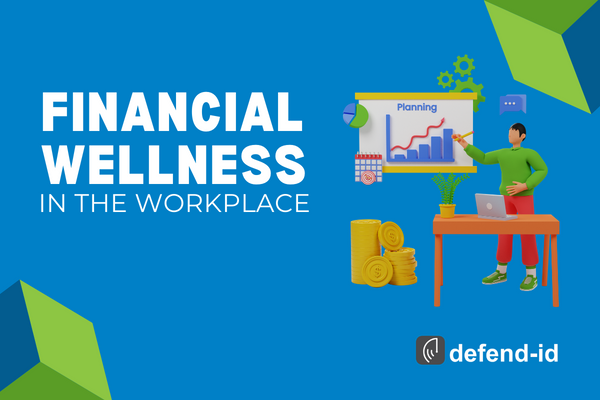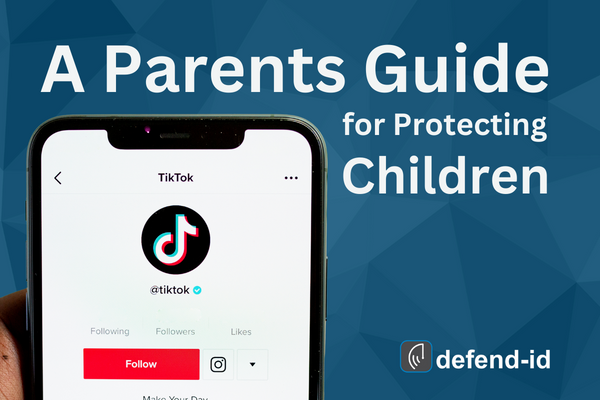
by Brian Thompson | Dec 28, 2023 | Uncategorized
Imagine waking up one morning to find your bank account drained, your credit score in tatters, and your personal information floating around the dark web. This chilling scenario isn’t a distant nightmare; it’s the harsh reality of identity theft, a growing threat impacting millions each year. But fear not, champions of your personal fortress! By embracing these powerful resolutions, you can build an impenetrable shield and write your own secure ending for 2024. Here are your Identity Theft Resolutions for 2024!
1. Build a Digital Fortress:
- Unbreakable Passwords: Ditch the paper walls of weak passwords! Craft strong, unique passwords for each account, wielding a mix of numbers, symbols, and upper/lower case letters. Enlist the loyal knight of a password manager to effortlessly safeguard your digital vault.
- Double Down with MFA: Imagine a drawbridge guarding your castle. That’s what multi-factor authentication (MFA) is! Enable it wherever possible to add an extra layer of security and keep intruders at bay.
- Secure Your Wi-Fi Kingdom: Don’t let strangers waltz in through your unlocked Wi-Fi gate! Fortify it with a strong password and encryption, creating a secure moat around your digital home.
2. Practice Online Vigilance:
- Beware of Phishing Snares: Don’t fall for the poisoned apples of phishing scams. Approach suspicious emails and texts with caution, even from familiar senders. If it sounds too good to be true, it probably is. Remember, a cautious click today saves a financial meltdown tomorrow.
- Mind Your Social Media Windows: Adjust your social media privacy settings regularly, like adjusting the blinds on your castle windows. Be mindful of what you share, and remember: over-sharing can attract unwanted eyes. Keep your digital walls high!
- Public Wi-Fi: Proceed with Caution: Avoid using public Wi-Fi for sensitive activities like online banking. If you must, utilize a VPN to create a secure tunnel for your data, even in the open territory of public networks.
3. Maintain Credit Clarity:
- Regular Credit Checkups: Treat your credit report like a map to your financial castle. Check it regularly for inaccuracies or suspicious activity – you’re entitled to free reports from all three bureaus once a year! Early detection is key to stopping intruders before they cause damage.
- Consider a Credit Monitoring Service: Enlist a vigilant guard in the form of a credit monitoring service. These services alert you to any suspicious changes on your reports, giving you time to sound the alarm and stop potential attacks.
4. Embrace Proactive Protection:
- Invest in Identity Theft Protection: Go beyond monitoring and invest in a comprehensive identity theft protection service. These services offer restoration assistance and even insurance against financial losses, providing an impenetrable outer wall for your digital fortress.
- Defend Your Devices: Guard your smartphones, laptops, and other devices like loyal gatekeepers. Equip them with anti-virus software and strong passwords to keep malware and unauthorized access at bay.
- Stay Informed and Empowered: Knowledge is power! Stay up-to-date on emerging identity theft threats and security updates. Be proactive, not reactive, and equip yourself with the knowledge to outsmart even the most cunning digital villains.
Remember, identity theft isn’t some distant fairytale. It’s a very real threat, but by adopting these powerful resolutions, you can write your own secure ending. Embrace a safer 2024, where your personal information is protected and your peace of mind reigns supreme. Now go forth, champions, and defend your identity!
Share this article and spread the word about others with their Identity Theft Resolutions for 2024! #DefendYourID #Secure2024
Additional Resources to help you Identity Theft Resolutions for 2024:

by Brian Thompson | Nov 30, 2023 | Uncategorized
The Medicare enrollment period marks not only a crucial time for seniors but also a phase of heightened risk of identity theft in this demographic. With identity thieves increasingly targeting this age group, comprehending these unique risks is crucial for effective prevention. In this blog post, we explore the heightened risk of identity theft in seniors, particularly during the Medicare enrollment period, offering strategic insights and tips to counter this growing concern.
Senior Identity Theft Protection During Medicare Enrollment
Targeted for Their Vulnerability
- Seniors are often perceived as more vulnerable due to substantial savings and potential unfamiliarity with digital security measures.
- The Federal Trade Commission (FTC) finds that individuals over 60 are less likely to report fraud, which can encourage identity thieves.
Alarming Statistics:
- According to the Department of Justice, seniors are 34% more likely to fall victim to identity theft than younger people.
- The average loss for seniors from identity theft is around $1,200, significantly higher than the amount lost by younger victims, per recent studies.
Essential Tips for Protecting Your Identity During Medicare Enrollment
- Medicare Number Safety: Treat your Medicare number with the same confidentiality as a credit card number.
- Awareness of Medicare Scams: Remember, official Medicare representatives will not call to ask for your number unless you’ve previously agreed to such contact.
- Vigilance with Medicare Statements: Regularly review your statements for any discrepancies.
- Document Security: Dispose of sensitive documents, like old Medicare statements, by shredding.
- Skepticism of ‘Free’ Offers: Be wary of offers asking for your Medicare number in exchange for free services.
Steps to Take if Identity Theft Occurs
- Report Immediately: Contact Medicare at the first sign of fraud, especially during this high-risk period.
- Monitor Your Credit: Regularly review your credit reports for unfamiliar activities.
- Notify Healthcare Providers: Keep your medical records accurate by informing providers of any identity theft incidents.
Senior Identity Theft Protection During Medicare Enrollment
As the Medicare enrollment period progresses, it’s more important than ever for seniors to be equipped with knowledge and strategies to protect themselves from identity theft. Understanding the risks, regularly monitoring personal and financial information, and practicing caution can significantly reduce the likelihood of becoming a victim. Stay informed, stay vigilant, and protect your well-being during this crucial time.
Articles Related to 2023 Medicare Enrollment: Essential Tips for Senior Identity Theft Prevention:

by Brian Thompson | Aug 16, 2023 | Uncategorized
I totally get that you see or hear about identity theft protection as part of this or that coverage. “…it’s offered everywhere already,” one partner said.
Why wouldn’t you think it’s all the same…
It is likely though that, those services attached to or bundled into something else only cover a part of the problem. Coverages like insurance for money loss or basic monitoring, but let me explain why having everything together in one package is super important:
- All-Around Protection: Think of it like a puzzle – if you’re missing a piece, the picture isn’t complete. Our protection plan isn’t just one piece; it’s the whole puzzle. It has different parts that work together, so you’re safe from all angles.
- Stopping the Bad Stuff: It’s like having a team of detectives watching over your info all the time. They’re on the lookout for anything fishy and can stop bad things from happening before they even start.
- Full Safety Net: Other plans might offer some money back if things go wrong, but our plan goes beyond that. It’s like having a big safety net that catches you if anything happens – not just for money but also for your name, credit, and even the legal stuff.
- Personal Help: If the worst happens, we’re right there with you. Our experts know exactly what to do to fix things. They’ll make a special plan just for you and guide you every step of the way.
- Proven Success: Our plan has helped lots of people before. We’ve saved the day for many folks who thought they were in big trouble. Our track record shows we know what we’re doing.
So, even though “it’s offered everywhere already”, remember that having all the parts together in one complete package gives you the strongest defense against identity theft. It’s like having your own superhero team working around the clock to keep you safe and sound.
Related Articles

by Brian Thompson | Apr 20, 2023 | Uncategorized
April is Financial Literacy Month, a time to focus on the importance of financial education and how it can help individuals and families achieve their financial goals. Financial literacy is the ability to understand and manage one’s money. It includes understanding basic financial concepts such as budgeting, saving, investing, and debt management. Financial literacy is essential for everyone, but it is especially important to advocate for financial wellness in the workplace. Employees will benefit and so will the company!
There are many reasons why financial literacy is important for employees. First, it can help them make better financial decisions. Employees who are financially literate are more likely to save for retirement, pay off debt, and avoid financial problems. Second, financial literacy can help employees improve their job performance. Employees who are financially stable are more likely to be productive and engaged at work. Third, financial literacy can help employees achieve their financial goals. Employees who are financially literate are more likely to be able to buy a home, save for a child’s education, and retire comfortably.
There are many things that employers can do to help their employees improve their financial literacy. One of the most important things is to provide employees with access to financial education resources. Employers can offer financial literacy workshops, seminars, and online resources. Employers can also provide employees with financial counseling services. Financial counseling can help employees develop a budget, save for a goal, and manage debt.
Employers can also help their employees improve their financial literacy by offering financial benefits. Some of the financial benefits that employers can offer include:
- 401(k) plans
- Health savings accounts (HSAs)
- Flexible spending accounts (FSAs)
- Employee assistance programs (EAPs)
- Identity Theft Protection Services
- Credit counseling services
By providing employees with access to financial education resources and financial benefits, employers can help their employees improve their financial literacy and achieve their financial goals.
Here are some additional tips for employers on how to improve their employees’ financial literacy:
- Make financial literacy a priority.
- Provide employees with access to financial education resources.
- Offer financial benefits – like identity theft protection…😉
- Encourage employees to take advantage of financial education opportunities.
- Create a culture of financial wellness in the workplace.
By following these tips, employers can help their employees improve their financial literacy and achieve their financial goals.
Employees who are financially literate are more likely to be productive and engaged at work, and they are also more likely to achieve their financial goals. Financial Literacy for Employees is a topic that is important for both employees and employers. Employers can help their employees improve their financial literacy by providing access to financial education resources and financial benefits. By doing so, employers can create a culture of financial wellness in the workplace and help their employees achieve their financial goals.
Related articles:

by Brian Thompson | Feb 9, 2023 | General, Identity Theft, Uncategorized
As a parent, it’s important to be aware of the potential dangers and harmful content on TikTok, a popular social media platform among children. This guide provides information on TikTok parental controls and the reasons why it may be best to keep children off the app.
TikTok Parental Controls: A Guide for Protecting Children
Concerned parents and authorities need a comprehensive guide on TikTok parental controls to protect children from harmful and inappropriate content on the popular social media platform. This tutorial outlines step-by-step instructions to implement TikTok controls and discusses privacy policies.
- Create TikTok Account: Get started by creating a TikTok account for your child, giving you access to all platform features and settings.
- Enable Digital Wellbeing: Go to “Settings & Privacy” and select “Digital Wellbeing” to enable features such as “Screen Time Management” and “Restricted Mode.” These tools help monitor children’s activity and protect them from harmful content.
- Adjust Privacy Settings: Protect your child’s privacy by visiting “Settings & Privacy” and selecting “Privacy and Safety.” Change who can send direct messages, view videos, and see their profile to the most secure options.
- Report Inappropriate Content: Encourage your child to report any inappropriate or harmful content by using TikTok’s reporting feature.
- Educate Children: Parental controls are important, but so is educating children on online safety and the potential dangers of social media. Teach them to be cautious with information they share, avoid strangers, and report any inappropriate behavior or content.
Regarding privacy policies, TikTok collects information such as location, device information, and usage data. While this data improves user experience, it may raise privacy concerns for parents. To protect children’s privacy, review TikTok’s privacy policy and adjust app privacy settings to limit data sharing.
In conclusion, TikTok parental controls provide a vital way to protect children from harmful and inappropriate content on the app. By creating a TikTok account, enabling digital wellbeing features, adjusting privacy settings, reporting inappropriate content, and educating children, parents can ensure a safe and enjoyable TikTok experience for their kids.
There are several reasons why it may be best to keep children off TikTok. Some of the main concerns include:
- Inappropriate Content: TikTok is known for hosting a vast amount of content that may not be suitable for children. This includes content that is sexually explicit, violent, or promotes harmful ideologies.
- Online Safety: TikTok is a social media platform that can be used by predators to target and exploit children. Children may be at risk of being exposed to inappropriate content, cyberbullying, or may become victims of online grooming.
- Screen Time: TikTok is a highly engaging platform that can quickly consume a lot of a child’s time. Spending too much time on TikTok can lead to decreased physical activity, disrupted sleep patterns, and decreased academic performance.
- Privacy Concerns: TikTok collects and stores personal data from its users, which can raise privacy concerns. Children may not understand the implications of sharing personal information online, and their data could be used for malicious purposes. See TikTok Terms of Service
- Intrusive Policies: TikTok’s privacy policies may be considered intrusive, as the app collects and stores a large amount of personal data from its users. This can raise privacy concerns, particularly for children who are vulnerable.
Considering the potential dangers and harmful content on TikTok, it may be best to keep children off the app. Instead, parents can encourage children to spend their time on other, safer and more appropriate activities.
Protecting children on TikTok requires a combination of parental controls, education, and awareness of the potential dangers. By understanding TikTok’s privacy policies, implementing parental controls, and limiting children’s time on the app, parents can ensure a safe and enjoyable online experience for their kids.
Related Articles:

by Brian Thompson | Feb 2, 2023 | Uncategorized
In today’s fast-paced business world, small business owners face numerous challenges. Challenges include the cost of providing valuable employee benefits while also keeping expenses low. However, with the growing threat of identity theft, it’s essential to find a way to protect employees while also securing the success of the business. That’s where the idea of “Protecting Employees and Securing Success” comes into play. By including identity theft protection in employee benefits, small businesses can:
- attract and retain top talent,
- improve employee morale,
- and ensure the safety of their employees’ personal and financial information.
This article will explore the benefits of offering identity theft protection as a benefit and how it can positively impact both employees and the business.
The struggle
Small business owners face a constant struggle in trying to balance the cost of employee benefits with the value that these benefits offer to their employees. In today’s digital age, where a significant amount of personal and financial information is stored online, the threat of identity theft has become a significant concern. This is why many companies have started including identity theft protection in their benefit packages. They are adding ID Theft Protection to not only attract top talent but also to provide added value to their employees.
Identity theft is a growing problem, affecting millions of people every year. In the event of a data breach or other security incident, the aftermath can be a long and costly process for the victim to recover. According to the Identity Theft Resource Center, the average time it takes a victim to recover from identity theft is 600 hours. 600 hours is equivalent to over two and a half weeks of full-time work. This is not only a burden on the victim but also on the company. Companies are losing valuable productivity and face increased costs associated with their employee’s recovery process.
A Solution
Providing identity theft protection as a benefit can help small businesses stand out from their competitors while also providing peace of mind to their employees. It can be an attractive perk for job seekers and help the company attract and retain top talent. In addition, it can be cost-effective compared to the time and resources it takes to recover from identity theft.
Lets face it companies are already paying for their employees to recover on their own. But if they have a professional to help with the recovery process it is much less expensive. A professional identity theft protection service will provide the necessary support and resources for employees to quickly and efficiently recover from identity theft. This can include 24/7 monitoring, credit reports, and fraud resolution services. The cost of these services is usually minimal compared to the cost of lost productivity and the time it takes for an employee to recover on their own.
Another advantage of including identity theft protection as a benefit is that it can help build trust and improve employee morale. When employees know that their employer is taking steps to protect their financial security, they feel valued and appreciated. This, in turn, can lead to increased job satisfaction and a more motivated and productive workforce.
Including identity theft protection as a benefit for small businesses is a smart move. Not only will it provide added value to employees, but it will also set the company apart from its competition. It is also cost-effective compared to the time and resources it takes for employees to recover on their own. So, why wait? Take the first step towards a safer and more competitive workplace. Offer Identity theft protection to your employees with defend-id today.
Agents Offer Identity Theft Protection?





